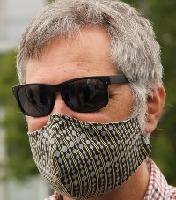Greg Bak is the Associate Professor of History (Archival Studies) at the University of Manitoba.
Heritage institutions are accustomed to having more mandate than resources. We are used to supplementing meagre core funding by applying for special project funding, whether internal or external. Open source software offers a way of structuring collaboration that allows us to build upon sporadic and context-dependent project funding.
Products such as Archivematica, BitCurator and Fixity offer institutions of all sizes access to purpose-built digital preservation tools and systems that can be adapted to local needs. Heritage institutions are still working to absorb the different logic and economic demands of using open source systems as opposed to proprietary systems. Costs are not necessarily reduced, but they are differently incurred, distributed and managed. Initial setup costs are drastically reduced, but subsequent work is required to bring the system into line with local institutional and user needs. Development of the code base can be shared among institutions. Smaller institutions can leverage work done by larger institutions and consortia.
This can be particularly important for community archives. Grant Hurley has described how community archives can band together to build “community clouds” that include digital preservation services. The Mennonite Heritage Archives, located in Winnipeg, Canada, has already done this for archival description and access, assembling a consortium of Mennonite archives and using the open source system AtoM to create the Mennonite Archival Information Database (MAID). The Mennonite Heritage Archives is currently exploring whether it can leverage the success of MAID to create a digital preservation system that would work with content that is discovered and accessed on MAID. Similarly, the National Centre for Truth and Reconciliation, which holds the archives of Canada’s Truth and Reconciliation Commission on Indigenous Residential Schools – also located in Winnipeg, Canada, on the campus of the University of Manitoba – is presently developing an open-source digital preservation infrastructure for its own use and to be leveraged by Indigenous archives throughout Turtle Island.
Assembling a formal coalition of partners can be an effective way of building shared infrastructure by pooling limited resources. Equally, open source software allows archives and other heritage institutions to engage in long-term, structured collaboration, even outside of formal consortia. Using open source software makes smaller institutions part of a globe-spanning community of institutions with a stake in these tools and systems, and allows them to benefit when larger institutions or consortia of smaller institutions create new functionalities or improve the base code. Project funding, used to develop open source code, can result in long-term payoffs for project sponsors and for any other user of the open source code.
This kind of collaboration is well suited to the heritage sector. Open source allows heritage institutions to develop sector-specific systems that meet our particular needs, as we make incremental improvements to the code base with every special project and new functionality.

Read more...